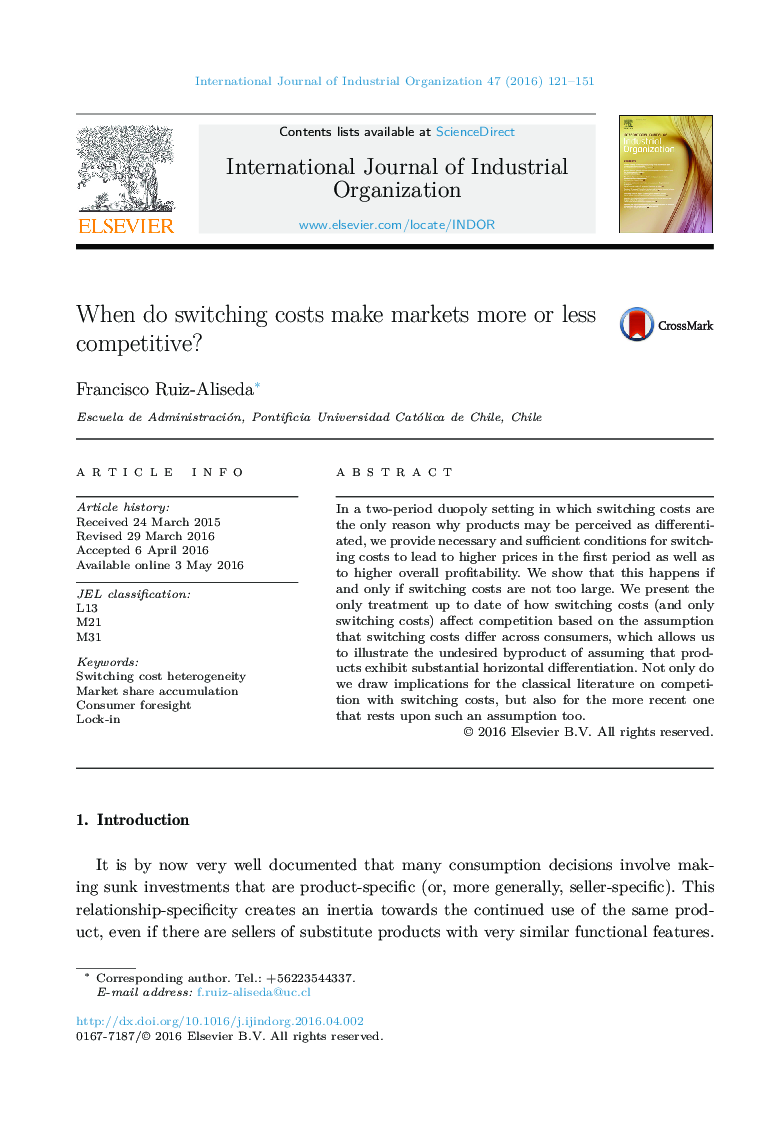| Article ID | Journal | Published Year | Pages | File Type |
|---|---|---|---|---|
| 5077821 | International Journal of Industrial Organization | 2016 | 31 Pages |
Abstract
In a two-period duopoly setting in which switching costs are the only reason why products may be perceived as differentiated, we provide necessary and sufficient conditions for switching costs to lead to higher prices in the first period as well as to higher overall profitability. We show that this happens if and only if switching costs are not too large. We present the only treatment up to date of how switching costs (and only switching costs) affect competition based on the assumption that switching costs differ across consumers, which allows us to illustrate the undesired byproduct of assuming that products exhibit substantial horizontal differentiation. Not only do we draw implications for the classical literature on competition with switching costs, but also for the more recent one that rests upon such an assumption too.
Related Topics
Social Sciences and Humanities
Economics, Econometrics and Finance
Economics and Econometrics
Authors
Francisco Ruiz-Aliseda,
